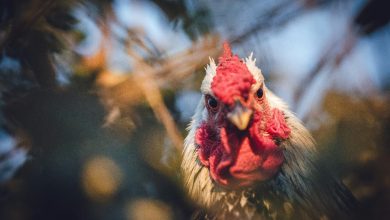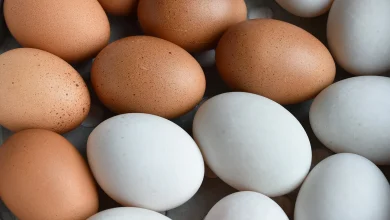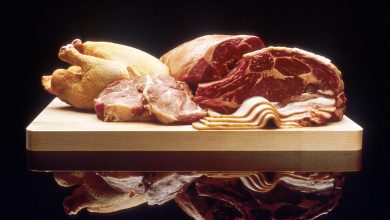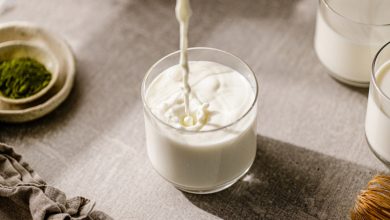Importance of Biosecurity Measures in Poultry

Zulfqarul Haq, Azmat Alam Khan, Nazir Ahmed and M. Iqbal Yatoo.
1Division of Livestock Production and Management, F.V. Sc & AH, Shuhama
2 Directorate of Extension, Shalimar -SKUAST-Kashmir.
Sher-e-Kashmir University of Agricultural Sciences and Technology of Kashmir, India
Introduction:
In the last few decades, poultry industry has shown a tremendous growth all over the world. Consumption of chicken has increased due to its versatility as a food, and considered as healthier meat than from other sources. As poultry industry progressed, disease outbreaks and its associated challenges have become more common and costlier to manage. Recently, the Newcastle disease (ND), low pathogenic avian influenza (LPAI) and high pathogenic avian influenza (HPAI) have become endemic, resulting in heavy losses to poultry industry. During the disease conditions, poultry farmers rely more on medication and vaccination for control measures. This is associated with high costs, and more often the success may not be guaranteed. Strict biosecurity measures along with vaccinations are adopted to control some contagious poultry diseases, as vaccination alone is not enough to control diseases in field conditions. Biosecurity is the most efficient and cost effective method of disease prevention. Disease management and eradication are difficult and expensive. Effective implementation of biosecurity measures prevents many threats to poultry health.
The nature of disease producing organisms:
In all biosecurity programs, it is most important first to consider the nature of various disease producing organisms, particularly in respect of their ability to survive in the environment. This is because their capacity to survive away from the bird would influence their chances of affecting the birds. This in turn will determine the extent to which biosecurity may have to be used.
Biosecurity, which literally means safety of living things, is a programme designed to prevent the exposure of birds to disease causing organism by reducing introduction and rapid spread of pathogens into and between the farms. Biosecurity in brooder sense encompasses insulation, traffic control sanitation, vaccination, serological monitoring of diseases and air quality etc. which will aid in preventing the entry and control the pathogens in and around the farms.
Biosecurity is the cheapest and at the sometime most effective means of control available without which any disease prevention programme will not be work well. Biosecurity is a defensive health plan and hygiene procedure that can help to keep your farm disease free. Biosecurity is therefore one of the integrated parts of farm operations. As poultry operation becomes more and more efficient, however, they also become threats to themselves and their neighbors and the concentrations of more birds in limited space. Poultry farmers should take time to eliminate as many disease causing organisms as possible. Therefore, it is better to wait a little longer before introducing new flocks than to hurry and risk infection of new flock. The most effective form of protection against disease, especially for poultry under modern production techniques is biosecurity i.e. excluding disease from the farm environment and this holds the key to successful profitable farming.
Biosecurity, medication/vaccination and good management of farm are three sided of disease control triangle. Poultry must be given an environment in which disease and infection is controlled to the point where vaccination and medication achieve beneficial effects. Biosecurity is the key element in the triangle of disease control.
There are three types of biosecurity
i) Conceptual biosecurity
It is best to build the farm in an isolated area atleast 3 km away from the nearest poultry in the case of breeder farm and 1.6 km in the case of commercial layer and broiler farm. In the case of breeders, the farm should be always near from the major road ways that may be used to transport commercial and backyard poultry. Enough distance should maintain between breeder and grower farms as well as facilities such as hatcheries and feed mills.
ii) Structural biosecurity
Fencing of farm perimeter should be used to prevent unwanted visitors. Test water source for minerals, bacteria, chemicals contamination and pathogen load. Farm should have concrete stage with suitable water and power supply for sanitation of vehicles. Farm should have suitable location for storage of bagged feed. All weather, road within the farm to ease cleaning and to prevent spreading of microbes by vehicles and foot wear. Farm should have facilities for safe scientific disposal of dead birds. Farm should have safe housing with suitable rodent proofing. Feed, litter and equipment should be stored in a section separated from live birds’ area to prevent contamination. About 3 metre boundary of land around the building must be kept free of all vegetation to prevent rodent and wild life activity.
iii) Operational biosecurity:
Operation manuals should be developed for day to day activities carried out in feed mills, hatcheries, breeding and grow out facilities incorporating emergency plans.Proper decontamination and disinfection of equipments, house etc. should be follow after depletion of flocks. In breeder farms, all visitors and workers require showering and use clean farm clothes to prevent cross contamination between them. Maintain records for visitors and their purpose. In the case of breeder, no vehicles or equipment should be allowed within the farm area from the time of delivery of flock until disposal. In commercial broiler unit, a minimum flock interval of two week is recommended. Use an effective integrated pest management programme to control pest and rodents through biological, chemical and mechanical means. Approximates programme of disease diagnosis and proper vaccination schedule should be implemented. In small scale egg production unit, follow all-in-all-out system. If it is not possible, pullets should be obtained from a source free of vertically transmitted diseases. Recycling of egg packing materials etc. should be decontaminated at the point of entry of farm. Routine disease monitoring procedures like postmortem examination and periodic serum antibody assay to determine immune status of the flock. There should be regular culling of unhealthy, unproductive and disease birds.
Mechanical factors in disease prevention:
The following managerial factors help to reduce the spread of disease and stress to the birds.
Isolation:
It is not advisable to rear birds of different age groups in the same house. Whenever possible, it is advisable to practice the all-in-all-out system. Proper layout of houses, appropriate designing to prevent the entry of rodents, proper ventilation and the designing of feeders and drinkers to avoid spillage are basic essentials in disease prevention.
Quality chicks:
Ensure the chicks are received from a hatchery where adequate preventive care is taken for breeder birds to guard against Mycoplasmosis, Salmonellosis and Infectious bursal disease. Check for a history of vaccination against Marek’s disease. Look for the sign of dehydration. Ensure that the received chicks are healthy and are within the normal weight range.
Proper nutrition:
A good balanced feed prepared according to nutrient requirements at different ages will ensure proper health and good immune status in birds. Addition of Coccidiostats, Vitamins and mineral supplement is essential.
Water quality:
Poultry farmers often fail to provide the birds with good quality water. Both the microbial and chemical quality of the water may happen at the source, for instance in ponds, river, open well and the public water supply system or during storage as well as in the overhead tank or bins. Unhygienic practices on the farm results in the spread of disease. The microbial load shoots up during flood conditions. Faecal contamination of water will add to the presence of coliform organisms. The removal of excess dissolved minerals by cheaper and simpler method is not practicable and the farmer change to other water sources in case of excess minerals in the water. Chlorination is the best and cheapest method to get rid of micro-organisms. 5-8 gm of bleaching powder with about 35% available chlorine should be added to 1000 litre of drinking powder to maintain a chlorine level of 1-2ppm at delivery. A minimum contact time of one hour should be given before offering water to the birds.Where storage facilities are not available, liquid chlorine preparations like chloride dioxide, 5% sodium hypochloride (sanitech) etc. may be used at a level of 1ml per 10 litre of water. Ionophores containing 1.6% available Iodine is also used as water sanitizer at the same dosage level. Products containing Quaternary ammonium compounds like Quat, Quatovet, Encivet, Sokrena etc. may be used as water sanitizers as per the manufacturer’s specifications. By providing sanitized water to the birds, the chance of water borne infections is reduced and the cost of medication is saved. The life of pipelines and storage tanks is also increased and the overall growth of the birds and egg production efficiency will be improved.
Dead bird disposal:
The main principle involved in the prevention and control of current and emerging disease is the scientific disposal of dead birds. Mortality is inevitable in every poultry farm and it varies with the prevailing disease and sanitary conditions on the farm. When birds die, their carcasses remain as a source of infection for pen mates and other birds on the farm or other farms. All carcasses should be removed from the pen as soon as possible. Diseased and ill birds also discharge infectious material into the environment and acts as reservoirs for disease producing organisms.The habit of throwing dead birds on to the nearest manure pile or into an open field is dangerous and unscientific for the following reasons. The smell of the carcasses attracts street dog and cats, which consumethe infected carcasses and harbor the enteric organisms infectious to poultry. Because of their free movement, these animals are capable of carrying contaminated material or a portion of carcass to neighboring farms, with disastrous results. Vultures and other wild birds invade the carcasses and because potential carriers of disease causing agents from one farm to another or even from one country to another country if they migrates. The insects and flies acts as transmitter of infectious agents. The disease agents carried by rain water contaminate other water sources. The surrounding area of the farm is contaminated with feather and bones, causing air pollution. On decomposition, the carcasses may emits foul smell and cause air pollution.
Litter removal:
After the pen is emptied, deep litter and caged layer droppings should be removed to a field far from the poultry shed and spread to dry in the sun. It should be disposed of as soon as possible for manure or other purposes and not allowed to remain accumulating off a long period. Composting is better, since the heat produced will destroy the pathogens.
Disinfection:
It is done to free the farm from pathogenic microorganisms. A disinfectant is an agent that destroy pathogenic organisms and that can be applied on inanimate objects or used as a footbath. Phenol, Cresol, chlorine compounds and Iodophores can be used for disinfecting surfaces as well as the egg room, feeder, drinkers, buildings and footwear. Liquid formaline at 5% level or formaldehyde gas by fumigation will also serve as an effective disinfectant. Sun drying may be practiced for washed equipment.For cement surfaces dry heat in the form of flame is recommended. Copper sulphate as 0.5% solution is effective against fungi. Quaternary ammonium compounds are good disinfectants when used according to direction. However, they are not effective in hard water. They can be used for disinfecting surfaces, washing egg rooms, feeders and drinkers and other equipments.
Insect control:
Counter measures against insects are part of maintaining a sanitary environment, as insects play a significant role in transmitting diseases producing microorganisms, tape worms etc. Flies sit on the birds, irritate them, and prevent them from taking water and feeding normally, causing stress results in reduced egg production especially where cage rearing is practiced.
Insect or fly control measures include
i) Avoid stagnation of water in and around the farm premises.
ii) Provision of proper drainage facilities attending immediately to leaky drinkers.
iii) Use of insecticides spray or dusting at required interval.
iv) Training of birds and checking the birds, the feed and water quality to avoid watery droppings.
v) Keep the surrounding clean and surrounding clean and surrounding clean by covering the area with treated soiled devoid of vegetation and growing lawns.
Rodent control:
Keep rodents out from the initial stage of farming itself, since the farm is infested, it is difficult to get rid of them. Remove piles of unused equipments and empty gunny bags as they serve as breeding places for rats, mice and squirrels. Remove spilled feed daily. Store feed in well ventilated, rodent proof rooms. Use traps in the initial stages and later rodenticides. Rodenticides should be used at night according to specifications.
Conclusion:
Whole world came to realised the importance of biosecurity & quarantine during this COVID19 Pandemic. Although this biosecurity and quarantine protocols was in practice in poultry farming since long back.But the time has come to implement it strictly in the farm to avoid any chance of outbreak of zoonotic diseases. Poultry farms across the country need to maintain the basic sanitary conditions essential for healthy birds and hygienic products. An integrated biosecurity programme is an application on logical and sound principles specific to an enterprise, monitoring of disease status, evaluation of ongoing poultry farm operations on continuous basis with an objective to contain the diseases at bare minimum level. Some poultry diseases like Avian Influenza are zoonotic in nature, i.e. they may be transmitted to humans, and potentially poses serious public health risks.
Disease outbreaks among farm animals can cause significant economic damage. However, one can limit the impact through proper biosecurity measures.




